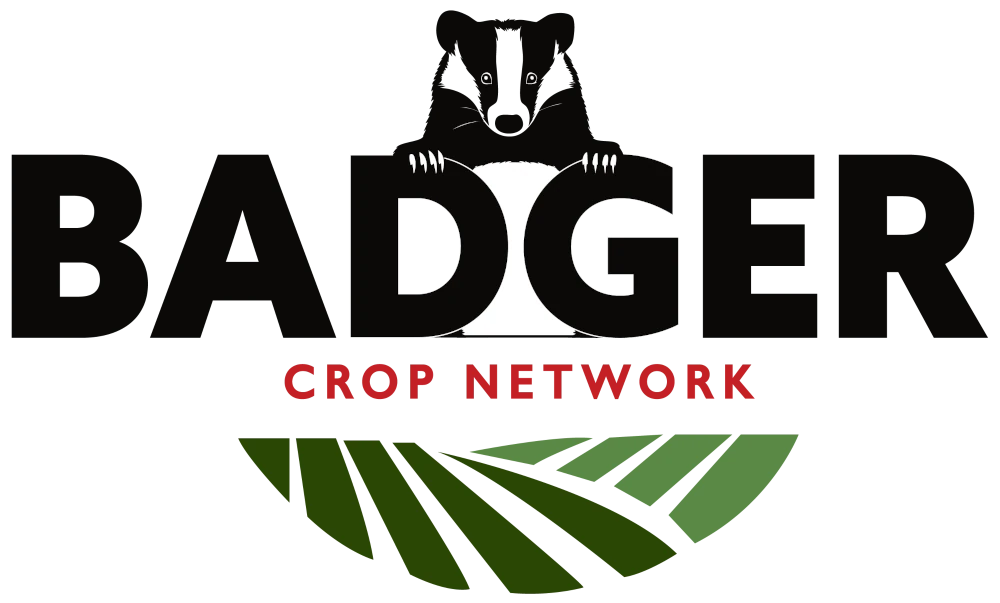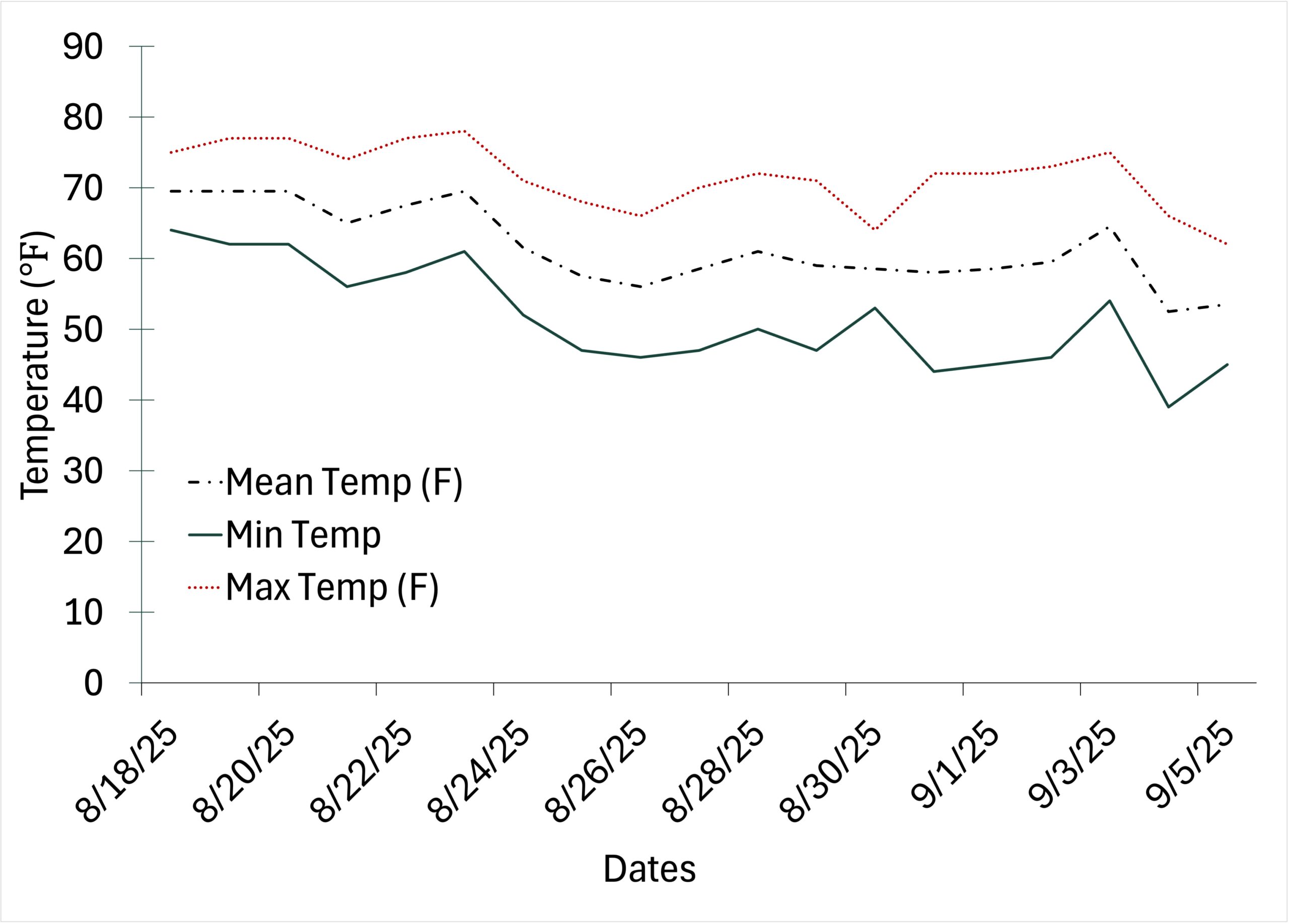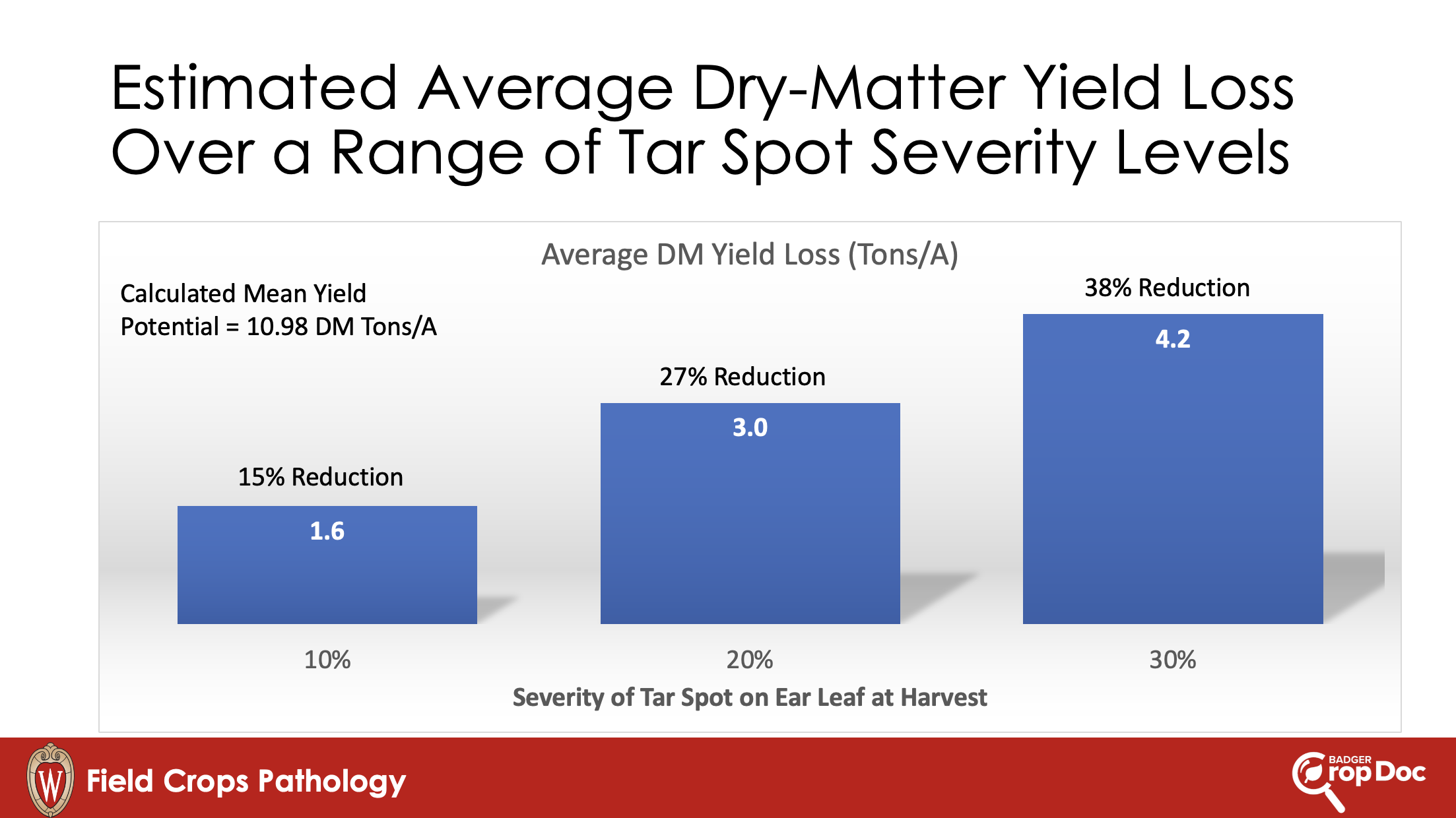Damon Smith, Extension Field Crops Pathologist, Department of Plant Pathology, University of Wisconsin-Madison
Winter Wheat Disease Update
We are at head emergence and full anthesis in much of the winter wheat in the southern third of the state, with anthesis quickly approaching in other parts of the state. As I mentioned last week, we found stripe rust on a susceptible cultivar in some research trials in south-central WI. Stripe rust continues to spread and increase in severity on susceptible cultivars in this location due to cooler temperatures and humid conditions leading to dew at night. Stripe rust is also continuing to spread in some other states given the favorable weather conditions (Fig. 1).
Fusarium head blight (FHB; Scab) risk is forecasted to be low, even on susceptible cultivars, in Wisconsin this week (Fig. 2). This forecasted low is due to cooler than normal conditions despite adequate moisture. Regardless of this situation, I think it would be smart to apply a fungicide rated good for FHB at the start of anthesis or up to 5 days after the start of anthesis. This situation could change quickly and having FHB protection out there is an important management tool to reduce mycotoxin issues in finished grain later in the season. In addition, all of the fungicides rated as at least good for FHB also have favorable ratings for stripe rust. Thus, you can manage two important diseases with one well timed fungicide application.
We are also seeing Cephalosporium stripe showing up more consistently in Wisconsin. I have seen Cephalosporium stripe in several locations myself, along with several reports from around the state. We believe that pressure is higher this year due to some winter heaving and cool wet conditions this spring. No in-season management is available for Cephalosporium stripe. However, noting which fields and locations in fields that have symptoms will help for future decisions about winter wheat management in those areas. Varieties with genetic resistance are available. Also, longer rotations and better grassy-weed control can help reduce the severity of Cephalosporium stripe. You will remember that in 2019, we had a severe epidemic of Cephalosporium stripe at our Sharon, WI uniform variety trial location. The severity ratings can be found in the trial report. We will also try to rate uniform variety trials this season where Cephalosporium stripe is found. Stay tuned for those results.
Soybean Disease Update
I have seen lots of soybeans in the VE to V3/V4 growth stages across the state. We have been watching the Pythium situation with wet conditions in areas. No significant reports have come in and things are reasonably quiet which is a good thing from a disease standpoint. I am seeing a lot of ‘halo’ effect and rough-looking beans treated with the seed treatment ILEVO. The cool conditions along with the use of pre-emergence herbicides this spring have made that readily apparent (Fig. 3). The best management plan in this situation is to be patient. Soybeans showing the ‘halo’ effect will grow out of it and will be just fine.
If we continue in this cool and wet pattern I am concerned about white mold showing up later this season. While no in-season management is needed right now, making preparation for later in the season can best be done now. For some insights on management strategies for white mold, check out this CPN TV episode on white mold. As you think about those fungicide applications for white mold between the R1 and R3 growth stages, remember that there are new forecasting tools available to help make this decision. These tools replace the now defunct Sporecaster and Field Prophet smartphone apps. Both tools are freely available on any device that can support a web browser.
The first tool is the Wisconsin Agricultural Forecasting and Advisory System which uses both the Wisconsin Mesonet weather station network and cloud-based, gridded weather data to make forecasts about various diseases of soybean and corn. The second Crop Disease Forecasting tool uses just and cloud-based, gridded weather data and supports the entire U.S. and can be found at the Crop Protection Network. These tools can help you plan those fungicide application to maximize their return on investment. If you also want to make a decision on which fungicides to use be sure to check out the CPN Fungicide Efficacy tool to find the best products for white mold management.
Corn Disease Update
Warmer temps are helping corn out. A lot of corn is short and at V4, which is interesting. Diseases don’t seem to be an issue at the moment, other than our usual finds of Anthracnose leaf blight on corn-on-corn acres. Thus, my annual message is to NOT spray fungicide for Anthracnose leaf blight as the plants will grow out of it. Anthracnose leaf blight is NOT linked to Anthracnose stalk rot which can show up later in the season.
While tar spot is not an issue at this point in the season, if these cool and wet conditions continue, it may be an important disease to manage later on in 2025. As the crop approaches tasseling the situation should be monitored. As I indicated above there are several forecasting tools available to help make the decision to apply fungicide or not for tar spot. In addition, you can use the same fungicide efficacy tool above to find the best products to manage tar spot. If you really want to dig in and look at return on investment of fungicides on corn, be sure to check out the CPN Corn Fungicide ROI Calculator.
As always, get out and SCOUT, SCOUT, SCOUT!










